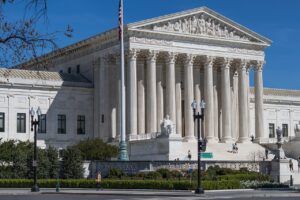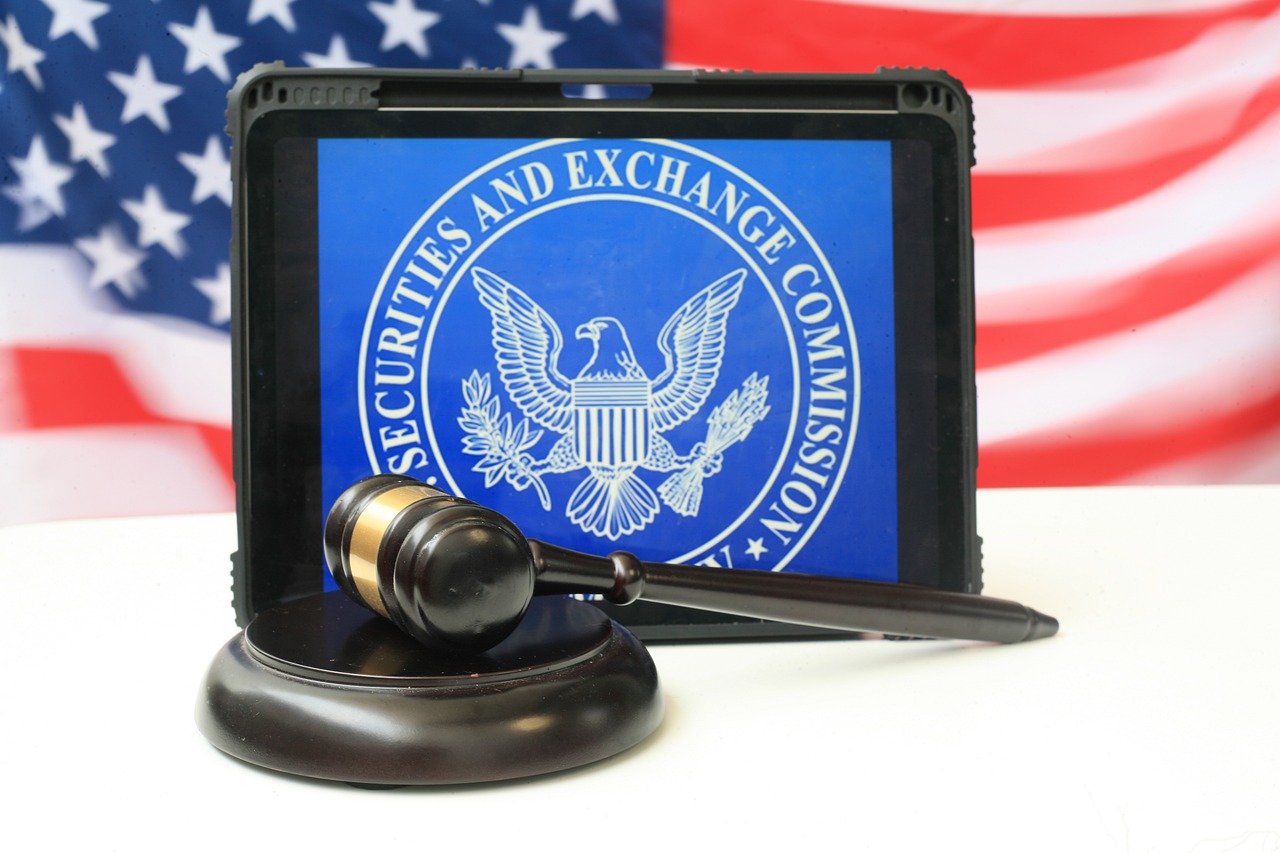It’s time once again to talk about the thorn in the cryptocurrency world. The saga between the SEC and Ripple has been a rollercoaster ride that has kept the financial world on its toes. It all started back in December 2020 when the U.S Securities and Exchange Commission (SEC) dropped a bombshell lawsuit on Ripple, claiming that the company had illegally raised over $1.3 billion through the sale of its digital asset, XRP.
For those not in the know, the SEC’s main beef with Ripple was that it considered XRP to be a security, which Ripple allegedly sold without proper registration. This sparked a frenzy in the crypto world, leading to widespread delistings of XRP from major exchanges and a massive dip in its value.
Ripple fought back, arguing that XRP is a currency, not a security, and that the SEC had picked on them unfairly. This dispute raised crucial questions about how cryptocurrencies are classified and regulated, which could set precedents affecting the entire crypto industry.
The lawsuit brought attention to the somewhat murky area of crypto regulations in the United States. Ripple’s journey against the SEC highlights challenges that are likely to emerge in the evolving landscape of digital currencies.
Keep in mind, the broader implications of the lawsuit extend beyond Ripple. It challenges how the crypto industry advances, opens discussions on regulatory frameworks, and emphasizes the need for clarity in digital asset classification. If you want to read more about the company Ripple and it’s cryptocurrency, XRP, you can check out this article.
Judge Torres’ Landmark Ruling: XRP Sales in Secondary Markets
Judge Torres stepped into the spotlight with a decision that turned heads across the crypto community. She ruled that XRP sales taking place on secondary markets were not securities. This ruling was a ray of sunshine for crypto enthusiasts and traders who’d been wary of the SEC’s crackdown.

The significance of this ruling can’t be overstated. It essentially provided a sigh of relief to exchanges and everyday investors who engage in XRP transactions. Without the burden of being classified as securities, these transactions sidestepped the layers of regulations associated with traditional securities.
In the lively discussion that followed, traders and analysts offered a variety of views on the potential ripple effects of this decision (pun intended). Many see it as a win for the crypto market’s fluidity and a step toward clearer regulatory pathways.
However, while XRP enjoys this status in secondary markets, uncertainty still lingers over other cryptocurrencies. The debate continues on how different digital assets are classified, and this case sets an example that other securities and digital assets could look to.
Navigating these waters means staying informed and taking note of how such legal decisions might impact future investments and trading practices. Stay smart and adaptable, because in the fast-moving world of crypto regulations, knowledge is power!
Institutional Sales: The Security Label and its Repercussions
Judge Torres didn’t stop at secondary market sales. She also made waves by ruling that Ripple’s early institutional sales were, indeed, securities. This part of the decision brought a different flavor to the ongoing saga, placing Ripple’s early transactions under the tighter scrutiny of securities law.
The crux of this ruling lay in how these early sales were structured and marketed. Essentially, if an asset is sold with the expectation of profits primarily from the efforts of others—hello, Ripple’s team—it can be classified as a security under the Howey Test, a standard used in the U.S to determine if a transaction qualifies as an investment contract.
For institutional investors, this ruling echoes as a call to reassess how they approach financial instruments in the crypto domain. It reminds them to weigh the implications of their investments with a new lens of caution and due diligence.
Ripple’s own reaction mirrored the mixed bag of sentiments across the industry. While they celebrated the clarity over secondary market sales, the shadow of potential enforcement action loomed over their institutional dealings.
Navigating the crypto landscape requires a deep understanding of rulings like this. If you’re an institutional investor, or just curious, keep an eye on how these regulations shape up. It’s crucial to adapt to the regulatory rhythm to safeguard investments and align with legal frameworks.
Financial Penalties: Ripple’s Fine and Its Implications
Ripple found itself in hot water financially following the court’s mixed ruling. The company was ordered to fork over a substantial fine, tacking on another layer of complexity to its ongoing saga with the SEC.
This fine, which reflected penalties associated with the unregistered institutional sales, served as a critical reminder of the financial risks involved in navigating the crypto waters without sufficient regulatory compliance. Ripple’s leadership faced mounting pressure to shore up their legal strategies and solidify their institutional processes.
I will say the fine though was different than what both entities wanted. Ripple and its CEO thought that there would be a fine of no more than $10 million. The SEC was calling for a fine of around $2 billion. Judge Torres ruled that the fine Ripple will have to pay for violating securities rules from its sale of RXP to institutions, be at $125 million. Ripple was all set to pay that, but the SEC had something different in mind and I’ll get into that shortly.

Ripple responded to this financial setback by doubling down on its commitment to fight the SEC’s allegations, while also exploring pathways to reconcile with current regulations. They summarized their stance by emphasizing transparency and compliance, aiming to restore confidence across their partners and investors.
Examining the ramifications of the fine reveals a broader message for crypto companies: the importance of regulatory agility cannot be overstated. These entities must maintain a strategic outlook on compliance to buffer against similar financial pitfalls.
For investors and stakeholders watching from the sidelines, this situation reiterated the need to understand the regulatory landscapes your business operates within. It’s more crucial than ever to stay informed about the compliance status of the assets you engage with. This helps in avoiding unexpected financial damages and ensures a healthier investment journey.
The SEC’s Recent Appeal: Future of the Ruling and Its Broader Implications
The recent twist in the Ripple saga came with the SEC’s decision to appeal Judge Torres’ ruling. This appeal represents an ongoing tug-of-war between Ripple’s perception of XRP and the SEC’s push for regulatory oversight.
What ripple effects could this appeal have on the broader cryptocurrency landscape? A few outcomes are likely, ranging from upholding Judge Torres’ decision to swinging fully in favor of the SEC’s tighter classification demands. Each path carries its own implications for investors, exchanges, and other crypto projects.

This ongoing appeal process shines a light on the regulatory uncertainty that still envelops the crypto industry. Every ruling, reversal, or modification can spur shifts in market trends, so keeping abreast of these updates is not just advisable, but essential for anyone with skin in the game.
Despite the murkiness, Ripple’s situation underscores a bigger message—regulations in the digital asset space are still finding their footing. For businesses and investors alike, staying flexible and informed can prove to be valuable strategies.
As the details of the appeal unfold, understanding its potential outcomes and integrating these insights into your decision-making process offers the best shot at staying ahead in the dynamic world of cryptocurrencies. Now because of this appeal by the SEC, XRP has decreased in value a little bit. It was above $0.60 a coin, but now was dropped to the $0.52 level. Despite all of this, there continues to be many great annoucements within the Ripple XRP ledger ecosystem. Ripple and its CEO Brad Garlinghouse vow to continue this fight against the SEC especially now that they have appealed the rulings in the lawsuit.
This has a lot of people worried as some fear that there could be a reversal of Judge Torres’ ruling that XRP is not a security when sold on secondary markets. Some also fear that this could drag out for another four years, but others have appointed out that an appeal process does not take nearly that long. Regardless, it will still be awhile before there is a ruling on this appeal meaning it could come sometime in 2026.
With that being said, this does not mean that Ripple and XRP has lost any momentum, quite the contrary. Ripple keeps making huge announcements from major partnerships and for the first time, two companies have filed applications for an XRP ETF with the SEC. The fact that the SEC has to approve these applications makes things a bit challenging but keep in mind that the SEC did approve ETF’s for Bitcoin and Ethereum which are the first cryptos in history to ever have ETFs approved. It only makes logical sense that XRP would be among the next ones waiting to be approved.
Things are moving fast in the crypto world and there have been some major developments in the last couple of days. The crypto war that the SEC is waging is heating up immensly! Crypto.com has sued the SEC in response to a Wells Notice of the SEC’s intent to sue them. Crypto.com is suing the SEC on the grounds that they are exceeding its authority in the crypto realm.
Next is the company Bitnomial that generally deals in futures trading and wants to list an XRP futures. They submitted an application with the CFTC (Commodity Futures Trading Commission), however the SEC is clamping down and warning them that XRPs futures are “Securities Futures”, even though Judge Torres has said XRP is not a security. Bitnomial just issued a lawsuit in response against the SEC saying they are overstepping their authority.
Last, but not least, and this is a big one, Ripple has now cross appealed after the SEC just recently appealed the decisions in the lawsuit against Ripple. This means they are gearing up to fight the SEC again, but now in the US Court of Appeals. Folks, all these things are VERY significant. Combine that with the recent congressional hearing of the SEC where many members of Congress slammed Gary Gensler and the SEC for what they are doing in the realm of digital assests. This is very significant because while the rest of the world is finally embracing cryptocurrency and block chain technology, the US is getting left behind because of the SEC’s wreckless policy of engagement by enforcement without clear rules of regulatory clarity for the crypto industry in the US. The crypto industry is sick of this and is fighting back HARD against the SEC and are starting to pile up wins against them. A long time ago this would’ve been unheard because if the SEC came after you, you were done for. That is no longer the case and it really is looking more and more like the SEC has really overstepped their bounds this time.
I will tell you one thing, I will still invest in XRP regardless of the SEC appealing the final outcome of the lawsuit. XRP just has so much going for it and the company Ripple has the biggest partnerships with financial institutions and companies all over the world, more than any other crypto firm out there. The SEC is just delaying the inevitable so in my opinion, I would still invest in XRP while the prices are still below $1.00 because they won’t remain that way for ever. I do want to remind everyone that I am not a financial advisor and any investments you make in cryptocurrency are at your risk. Speaking of risks, do check back as I will talk about other risks of investing in cryptocurrency. I will certainly post updates on this appeal when they become available so stay tunned.

